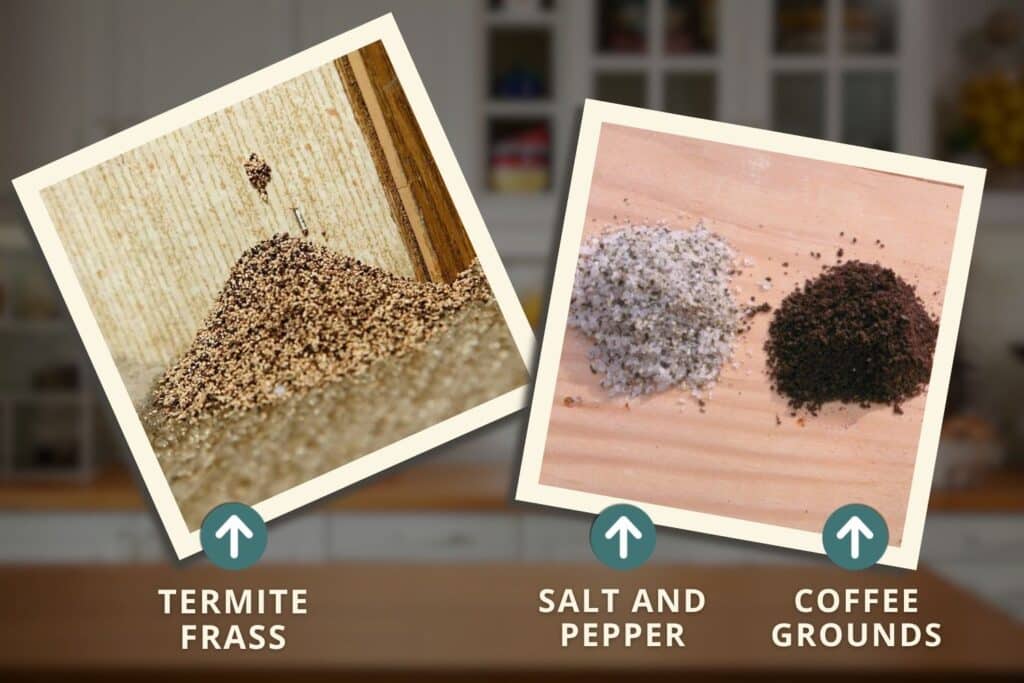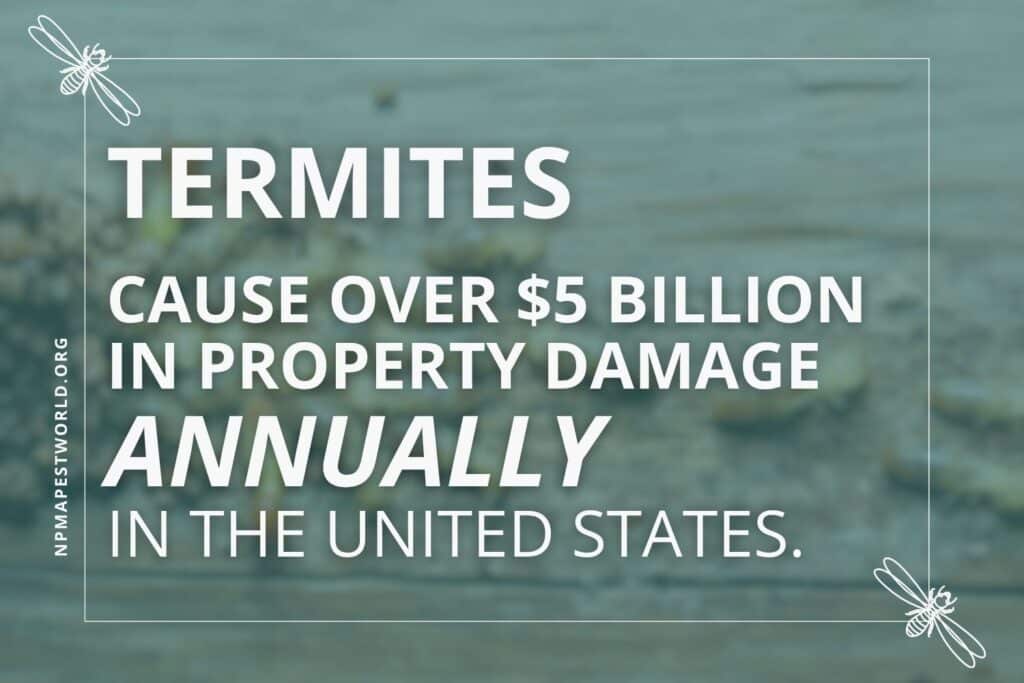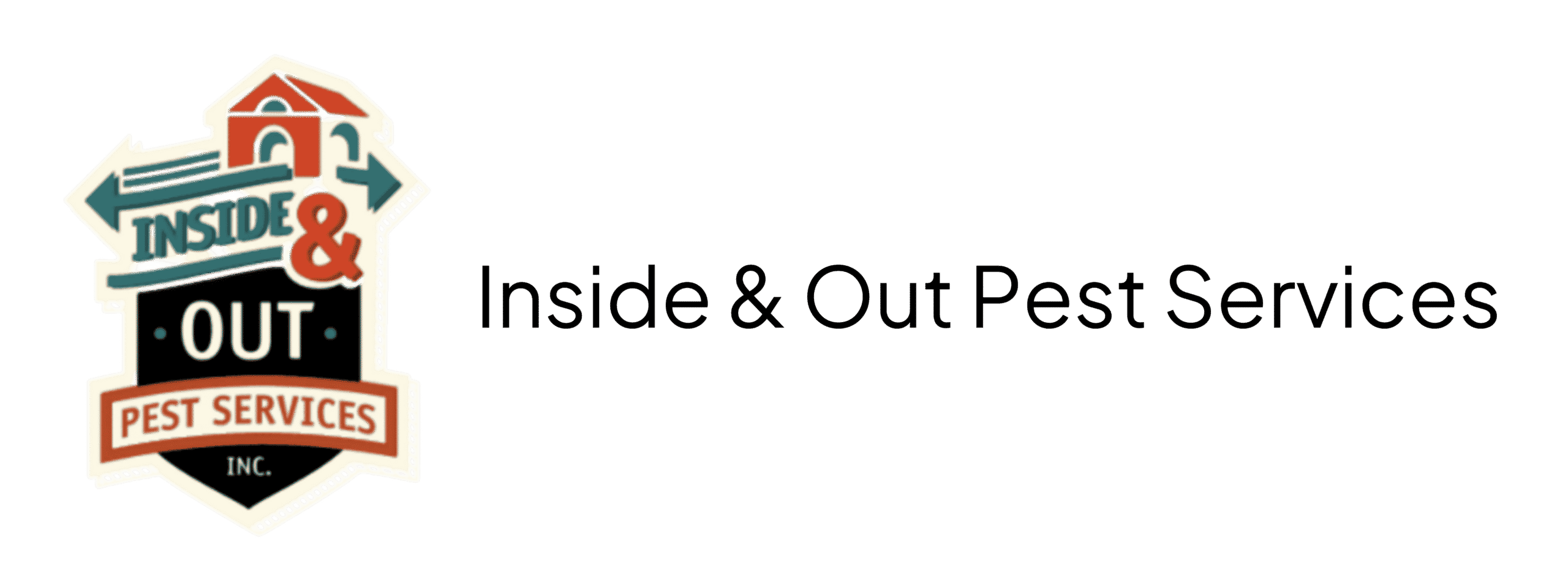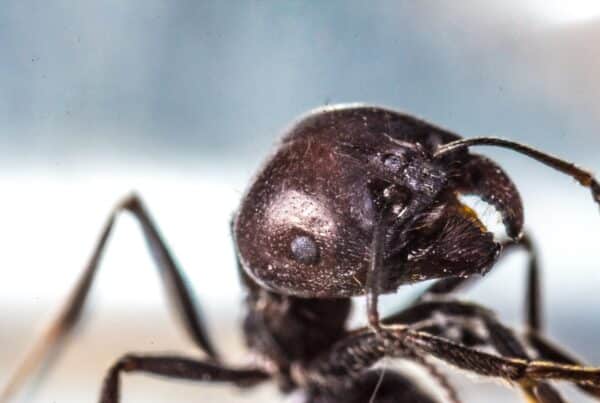If you spot what looks like sawdust near your baseboards or windowsills, take a closer look. It might be termite frass, and that small pile could be your first warning sign of a bigger problem.
Knowing how to identify termite frass and other signs of termite activity can help you catch an infestation early, before the damage gets worse. Here’s what to look for and why it matters.
What Is Termite Frass?
Termite frass is the dry, pellet-like droppings left behind by drywood termites.
These small, oval-shaped pellets are typically light brown to tan and often appear in tiny piles. They may resemble coffee grounds, coarse sand, or sawdust.
Drywood termites push frass out of small holes near their tunnels. If you see frass, it means termites are actively feeding on wood nearby. It is one of the clearest signs of an infestation.
Unlike subterranean termites, drywood termites do not rely on mud tubes or soil contact. That makes frass even more important to recognize, since you might not notice other signs right away.

Where You Might Find Termite Frass
Termite frass is usually found below small exit holes in wood structures. These can appear along:
- Baseboards
- Window and door frames
- Attic beams
- Wooden furniture
- Crawl space joists
The piles may build up slowly over time, especially in undisturbed areas. They are often mistaken for dirt, dust, or general debris.
We recommend checking dark corners, garage shelving, and any place where wood meets wall or flooring. These spots are common entry points and hiding zones for drywood termites.
Other Signs of a Termite Infestation
Frass is a major red flag, but it is not the only one. Here are other signs that could indicate a termite problem:
1. Hollow or Damaged Wood
Tap exposed wood with a screwdriver or light tool. If it sounds hollow or crumbles easily, termites may be inside. You might also notice blistered paint, warped surfaces, or bubbling under the finish. These are signs the wood is breaking down from within.
2. Discarded Wings
Swarming termites shed their wings as they establish new colonies. Finding small, clear insect wings near windows, vents, or light fixtures can signal recent termite activity. This is often one of the first signs people notice in early spring.
3. Clicking Sounds Inside Walls
Some termite species make soft tapping or clicking noises as they tunnel. These sounds are usually heard at night when the house is quiet. The noise comes from soldier termites banging their heads as a form of alarm or communication.
4. Mud Tubes (for Subterranean Termites)
Though drywood termites do not build mud tubes, subterranean termites do. These pencil-width tunnels run along foundations, crawl spaces, and exterior walls. They help termites stay moist and hidden while they travel between their underground colony and food sources.
5. Tight-Fitting Doors or Windows
As termites eat through wood, they can cause structural swelling that affects how doors and windows open. If these start to stick without explanation, it could be a warning sign of hidden damage.
6. Unexplained Dust or Debris
Termite activity inside walls or ceilings can leave behind tiny wood particles or soft, unexplained dust. These remnants may gather below baseboards, near electrical outlets, or under furniture.
Why It Matters
Termites cause over $5 billion in property damage each year in the United States, according to the National Pest Management Association. The sooner you spot the warning signs, the easier it is to contain the damage.
Drywood termites can go unnoticed for months because they live entirely inside the wood. That is why spotting frass or other small clues matters so much.
If left untreated, termites can weaken support beams, wall studs, floor joists, and even roof framing. This type of hidden damage can compromise a home’s structural integrity and lower its resale value.

When to Call a Professional
If you find frass or notice any other signs of a termite infestation, it is time to act. DIY treatments are rarely effective for termites because colonies are hidden deep inside walls, floors, or furniture.
At Inside & Out Pest Services, we provide full termite inspections and targeted treatment plans that eliminate the problem at its source. Our team is trained to spot subtle signs of termite activity and protect your home with long-term prevention methods.
In Jacksonville and the surrounding areas, we often see termite issues spike during warmer months. That is why seasonal checkups can be a smart preventive move. We also offer warranties and follow-up visits to help ensure the issue stays resolved.
Preventing Termite Activity
While not all infestations can be prevented, there are several ways to make your home less appealing to termites:
- Keep gutters clear to avoid water pooling around the foundation
- Repair roof or plumbing leaks quickly
- Store firewood at least 20 feet from the home and off the ground
- Seal cracks in your home’s foundation or siding
- Use treated wood when building decks or fences
An annual inspection can help you catch any new vulnerabilities before termites take advantage.
Related Questions
Is termite frass dangerous to humans?
Frass is not toxic, but it can trigger allergies or asthma if left to build up indoors. It is also a sign of active termites that need professional treatment.
How do I tell the difference between termite frass and sawdust?
Frass pellets are more uniform in size and shape than sawdust. They also tend to be found in piles near small holes, while sawdust from drilling or sanding is usually more scattered.
What is the difference between drywood and subterranean termites?
Drywood termites live entirely within wood and produce frass. Subterranean termites nest underground and build mud tubes. Each requires a different inspection and treatment approach.
How often should I have a termite inspection in Florida?
In Florida’s warm, humid climate, it is smart to schedule a termite inspection at least once a year. Termites are active year-round and early detection is key to preventing damage.
Conclusion
Frass is more than just a mess. It is a warning sign that termites may be actively damaging your home. If you notice anything unusual near wooden structures, do not wait.
Inside & Out Pest Services can inspect your home and stop the infestation before it spreads. Reach out today to schedule your inspection and protect what matters most.



